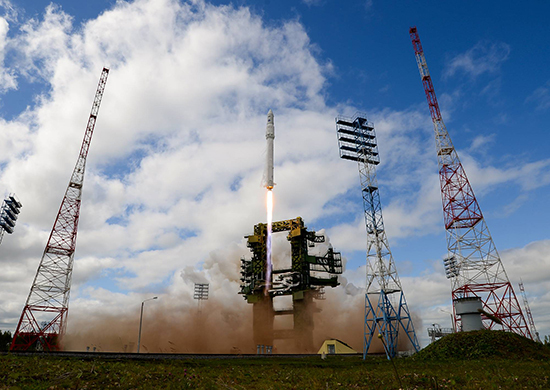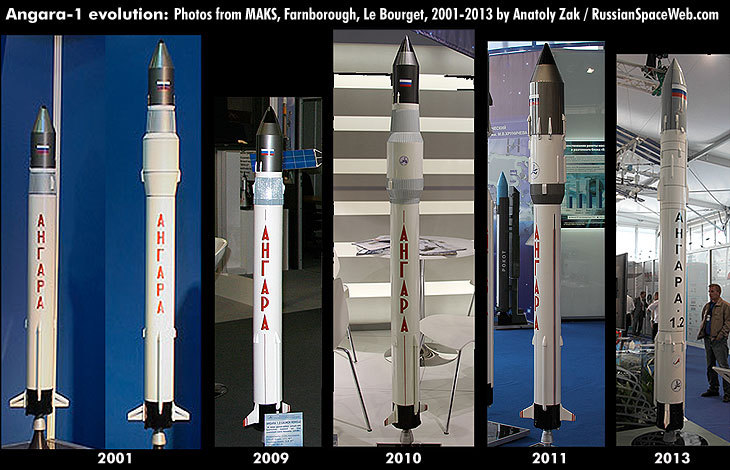What is wrong with Angara-1.2PP

July 9, 2014 happened, I’m not afraid of the word, a significant meeting in the Russian cosmonautics, after 20 years of development, finally, flight tests of the Angara launch vehicle began. But not everybody took this event as unambiguously positive, “experts” immediately put forward numerous theories that the launch was unsuccessful, and if it was successful, then only the first stage flew, and this “is not considered” - since the first stage Angara rockets have already completed three flights as part of the Korean KSLV. In general, again, the taxpayers "dust out of their eyes."
On what are the assumptions based on the fact that “something went wrong” tm ? Basically, three reasons are indicated:
- First, she smoked suspiciously in flight;
- Second, the rocket left the start and almost fell;
- And finally, the third and most important, the flight was suborbital.
Putting all three reasons together, especially considering that they are all true, we get an unsightly picture of failed tests. And if the first two points are explained quite simply (evaporation of air from a tank of liquid oxygen and the maneuver of withdrawal from the launch pad), then on the last point I would like to dwell in more detail.
In the beginning was a letter, even two
In fact, everything is explained and simple and complex at the same time, the whole point is in these two letters of the PP, which stands for
- Angara-1.1 with a loading capacity of 1.5 t
- Angara-1.2 - 3.8t
- Angara-3 - 13t;
- Angara-5 - 25t.
- Angara-7 (hypothetical) - 35t.
As we can see, there are no PPs in the Angara lineup, so why was it invented, and why was it impossible to launch Angara-1.1 or Angara-1.2? To begin with, you need to understand how 1.1 and 1.2 differ. As we know, all missiles of the Angara family are assembled from universal blocks URM-1 (for the first stages) and URM-2 (for the second and third), and so Angara-1.1 does not have a URM-2 at all. The role of the second stage on it is carried out by the Briz-KM overclocking unit. And since we know that the URM-1 successfully flew all three times as part of the Korean KSLV , and the Breeze-KM is used in conjunction with the Rokot launch vehicle, it is understandable to carry out such tests. The design of the URM-1 is given below (hereinafter illustrations from the site of Anatoly Zak )

But, as you probably already guessed, URM-2 is part of Angara-1.2, why didn’t you use it?
Not universal versatility
During the development of the URM-2, it turned out that the second stage is too heavy for a light hangar and too light for a heavy one. Therefore, stepping on the throat of universality, it was decided for the light Angara to make its own modification of the URM-2 with a reduced diameter from 3.6 to 2.9 meters. The evolution of design ideas is clearly visible in photographs of models from exhibitions of different years.

In the photograph of 2013, it can be seen that the diameter of the first and second steps are equal, just such will be Angara-1.2. But at the same time, URM-2 with a diameter of 3.6 meters will still be used on Angara-5. The design of the URM-2 can be carefully studied using the three-dimensional model presented below.

It was for the test of URM-2 that a special missile was prepared, which was called Angara-1.2PP, consisting of the first stage of Angara-1.2 (URM-1) and the third stage of Angara-5 (URM-2). Most of all, this missile resembles the 2010 Angara-1.2 modification.
Where's the booster block, Zin?
The differences between the PP and the standard Angara do not end there. The upper stage in Angara-1.1 and 1.2 uses the Briz-KM upper stage (it is impossible to put something into orbit without it, the upper stage also works to bring it into the reference orbit), but it isn’t on the PC. This is primarily due to the fact that in the test launch of the Angara it was decided not to display the payload, but to replace it with a mass-dimensional layout. This decision is apparently due to the fact that in the Center. Khrunichev is not employed by such self-confident people as Elon Musk, who used real satellites in the first three launches of Falcon-1 (by the way, all these launches were unsuccessful).
Purely theoretically, with the help of Breeze it was possible to put the prototype into orbit, and then with the help of it bring it down, but the paradox arises: Breeze will be able to start its work only if the first and second stage worked properly, and if they worked, then the tests are completed successfully, and if not, then there’s nothing to work. So, there is no upper stage, the heaviest second stage ... there is only one option - suborbital flight, you just need to choose a place.
I think there is no need to explain why the site in Kamchatka was chosen for the crash site, and not the Pacific Ocean or the territory of the “probable enemy” (in the first case, the press will eat, in the second, the probable opponent). By the way, due to the lack of an acceleration unit, the mass-size model was not separated from the second stage, since the separation means are either in the acceleration unit or in the payload, and there was neither one nor the other in the first launch. The complete device of the Angara-1.2PP is presented below.

Despite the persistent voices of critics of the Angara project, the tests of the URM-1 and URM-2 were successful, and now everything is ready to launch the heavy Angara-5 at the end of this year. It remains only to wish that these tests pass equally successfully.
For the post, information was used from: the
site of Anatoly Zack ;
TsiH website ;
Forum "Cosmonautics News" .
